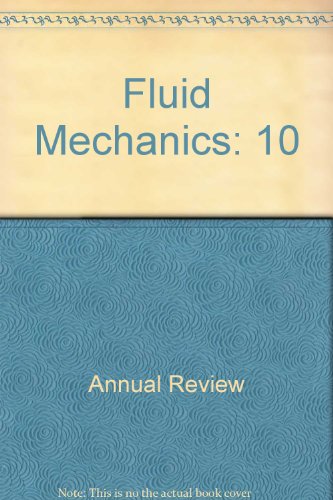沿液体填充表面的流动和液滴传输
IF 30.2
1区 工程技术
Q1 MECHANICS
引用次数: 33
摘要
液体注入表面(liquid -infused surfaces, LISs)是一种复合固体-液体表面,具有拒液、自愈和抑制结垢等显著特性。本文综述了液滴表面的流体力学,即表面与流场的相互作用以及液滴在这种表面上的行为。LISs的特点是有效滑移长度与其减阻性能密切相关,这使得它们适用于多种应用,特别是湍流。然而,由于失效机制,如润滑剂从表面结构中流失,降低了阻力。流场也可以在一个耦合的自组织过程中塑造润滑层。对于液滴,润滑剂减少了液滴钉住,增加了液滴的流动性,但也导致了湿润脊和相关的表观接触角的概念。LIS润湿性和地形的设计可以诱导低摩擦液滴运动,液滴可以动态地塑造润滑脊和膜厚度。预计流体力学年度评论的最终在线出版日期,第54卷是2022年1月。修订后的估计数请参阅http://www.annualreviews.org/page/journal/pubdates。本文章由计算机程序翻译,如有差异,请以英文原文为准。
Flow and Drop Transport Along Liquid-Infused Surfaces
Liquid-infused surfaces (LISs) are composite solid–liquid surfaces with remarkable features such as liquid repellency, self-healing, and the suppression of fouling. This review focuses on the fluid mechanics on LISs, that is, the interaction of surfaces with a flow field and the behavior of drops on such surfaces. LISs can be characterized by an effective slip length that is closely related to their drag reduction property, which makes them suitable for several applications, especially for turbulent flows. Drag reduction, however, is compromised by failure mechanisms such as the drainage of lubricant from surface textures. The flow field can also sculpt the lubricant layer in a coupled self-organization process. For drops, the lubricant reduces drop pinning and increases drop mobility, but also results in a wetting ridge and the associated concept of an apparent contact angle. Design of LIS wettability and topography can induce low-friction drop motion, and drops can dynamically shape the lubricant ridges and film thickness. Expected final online publication date for the Annual Review of Fluid Mechanics, Volume 54 is January 2022. Please see http://www.annualreviews.org/page/journal/pubdates for revised estimates.
求助全文
通过发布文献求助,成功后即可免费获取论文全文。
去求助
来源期刊
CiteScore
54.00
自引率
0.40%
发文量
43
期刊介绍:
The Annual Review of Fluid Mechanics is a longstanding publication dating back to 1969 that explores noteworthy advancements in the field of fluid mechanics. Its comprehensive coverage includes various topics such as the historical and foundational aspects of fluid mechanics, non-newtonian fluids and rheology, both incompressible and compressible fluids, plasma flow, flow stability, multi-phase flows, heat and species transport, fluid flow control, combustion, turbulence, shock waves, and explosions.
Recently, an important development has occurred for this journal. It has transitioned from a gated access model to an open access platform through Annual Reviews' innovative Subscribe to Open program. Consequently, all articles published in the current volume are now freely accessible to the public under a Creative Commons Attribution (CC BY) license.
This new approach not only ensures broader dissemination of research in fluid mechanics but also fosters a more inclusive and collaborative scientific community.

 求助内容:
求助内容: 应助结果提醒方式:
应助结果提醒方式:


